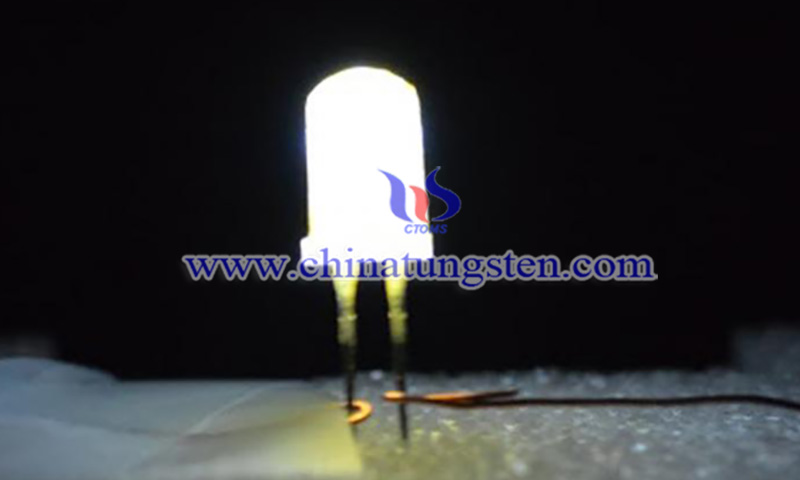Scientists Produce White Light Diodes without Rare Earths
- Details
- Category: Tungsten Information
- Published on Wednesday, 02 March 2022 22:57
A recent study mainly conducted by the researcher Velazquez report the development of white light diodes (WLEDs) by using rare earths free luminescent materials. The paper titled “Sunlike White Light-Emitting Diodes Based on Rare-Earth-Free Luminescent Materials” has been published in Materials 15(5), 2022.
Solid-state lighting (SSL) light sources based on light-emitting diodes (LEDs) are the next generation of energy-efficient lighting solutions. In the field of solid-state lighting, the development of WLEDs with a combination of high color rendering index (CRI) and good deep red color rendering R9 is a major difficulty.

On the other hand, most WLEDs rely on rare earth inorganic light-emitting materials. annual demand for rare earth metals has doubled in 15 years and is expected to reach 315,000 tons by 2030. The rapid growth in demand for these materials, combined with the monopoly of supply sources, poses a serious threat to the development of WLEDs in the coming years.
Due to potential qualities such as solution processability, cost-effectiveness, and low toxicity, organic light-emitting materials have attracted the interest of researchers for their use as spectral converters for photonic technologies in various industries such as photovoltaics, agriculture, ophthalmology, etc.
The use of luminescent organic compounds in LED lighting is a viable and promising option. In order to achieve better emissions covering the entire visible range as well as high quality light, it is necessary to select the appropriate UV/blue LEDs and luminescent chemical systems (phosphors).
In the present study, the authors describe the development of a WLED with a color rendering index (CRI) of 95.7 and an R9 of 78.7, which was developed using a multilayer remote phosphor set up with a blue LED chip as the excitation source and two emitting organic dyes (Lumogen Red and Coumarin 6) as spectral converters.
They report the fabrication of a novel rare earths free WLED with suitable CRI and R9 values. In addition, the development of a WLED system based on a blue LED chip and two light-emitting organic dyes are presented. This system reproduces the solar spectrum and improves the values of chromatic properties such as CRI and R9.
In addition, this study illustrates the development of 39 different WLEDs. These WLEDs act as spectral converters, using a combination of a blue LED and a series of light-emitting organic materials with long-range phosphors.
The luminescent organic dyes are embedded in a PMMA polymer matrix with a high degree of optical transparency. Thin films of these composite systems (polymer matrix and luminescent species) were deposited on glass. In order to improve the adaptability of the spectral conversion, the authors developed mono- and multilayer white light diodes with variable dye concentration, resulting in very high-quality light.

The researchers observed that the spectrum of emitted light was broadened to include the entire visible spectrum, which is believed to be responsible for the increased CRI score.
It was observed that the color rendering of luminescent objects can be successfully achieved by using organic materials in WLEDs. It was also shown that the proposed organic dye runs as a long-range phosphor and is pumped by a blue LED chip, and the resulting WLED produces white light with extremely high CRI and R9 values of 95.7 and 78.7, respectively.
The study illustrates that white light diodes are one of the most promising next-generation lighting technologies, with lower power consumption and higher luminous efficiency, while consuming less power.
- Rare Earth Manufacturer & Supplier, Chinatungsten Online: www.chinatungsten.com
- Tungsten News & Prices of China Tungsten Industry Association: www.ctia.com.cn
- Molybdenum News & Price: news.molybdenum.com.cn
- Tel.: 86 592 5129696; Fax: 86 592 5129797; Email: sales@chinatungsten.com



 sales@chinatungsten.com
sales@chinatungsten.com